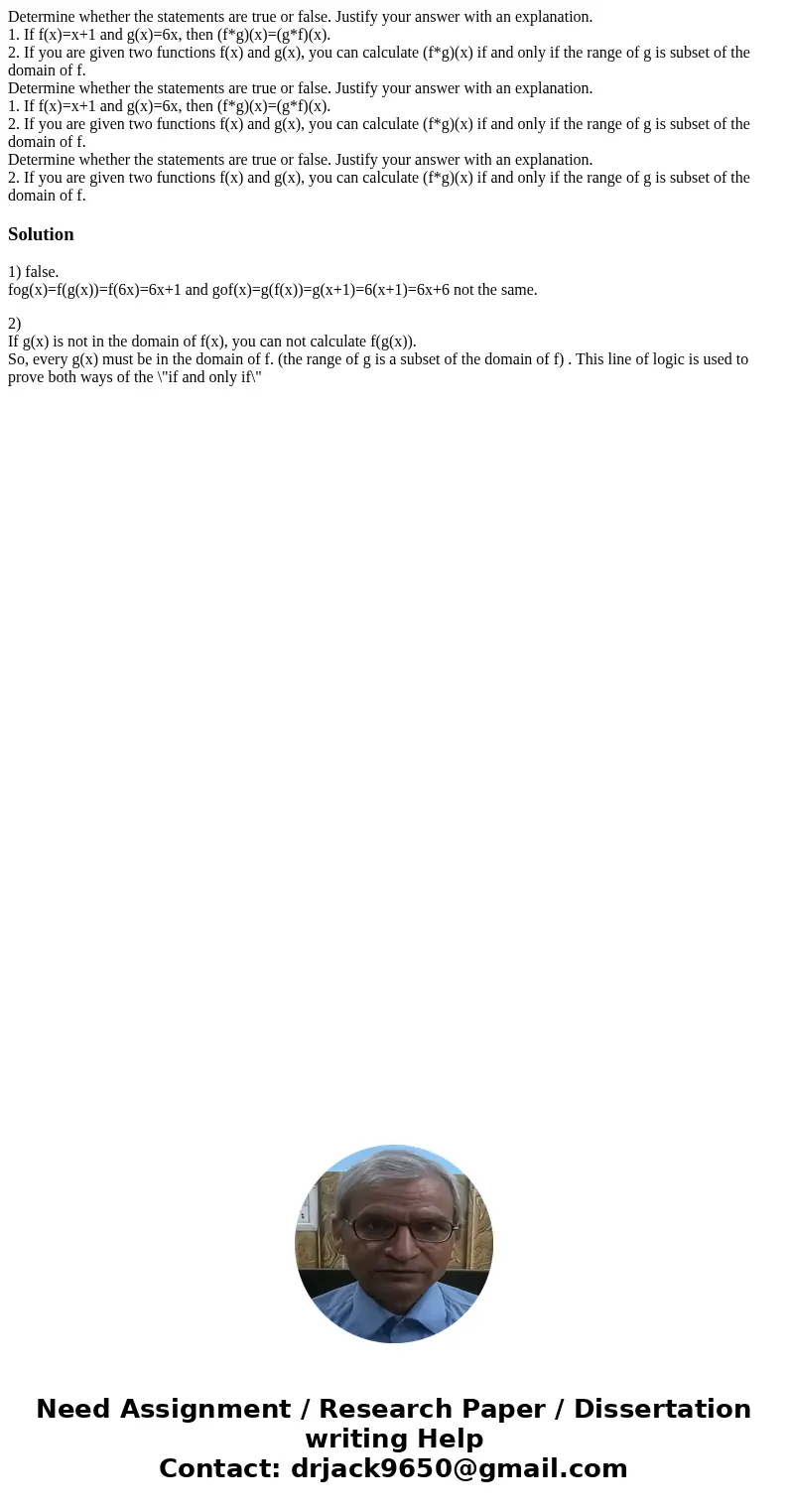Determine whether the statements are true or false Justify y
Determine whether the statements are true or false. Justify your answer with an explanation.
1. If f(x)=x+1 and g(x)=6x, then (f*g)(x)=(g*f)(x). 2. If you are given two functions f(x) and g(x), you can calculate (f*g)(x) if and only if the range of g is subset of the domain of f.
Determine whether the statements are true or false. Justify your answer with an explanation.
1. If f(x)=x+1 and g(x)=6x, then (f*g)(x)=(g*f)(x). 2. If you are given two functions f(x) and g(x), you can calculate (f*g)(x) if and only if the range of g is subset of the domain of f.
Determine whether the statements are true or false. Justify your answer with an explanation.
2. If you are given two functions f(x) and g(x), you can calculate (f*g)(x) if and only if the range of g is subset of the domain of f.
Solution
1) false.
fog(x)=f(g(x))=f(6x)=6x+1 and gof(x)=g(f(x))=g(x+1)=6(x+1)=6x+6 not the same.
2)
If g(x) is not in the domain of f(x), you can not calculate f(g(x)).
So, every g(x) must be in the domain of f. (the range of g is a subset of the domain of f) . This line of logic is used to prove both ways of the \"if and only if\"

 Homework Sourse
Homework Sourse